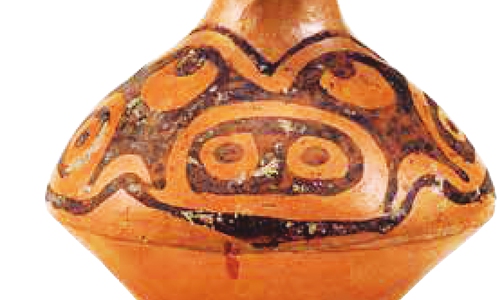
Book Chinese Cultural Relics written by Li Li Photo: Courtesy of China Intercontinental Press
Development of Painted PotteryAt first, pottery vessels were produced just for practical use, as their producers had no time and energy to spare to "decorate" their products for some sort of aesthetic taste. Among the earliest pottery ware unearthed so far, only a few containers have crude lines painted red round their necks. As life improved along with development of primitive agriculture, people came to have time to spare on undertakings other than for a mere subsistence - crop farming, hunting, animal raising, etc. While still serving people's practical needs, pottery became something denoting people's pursuit of beauty as well. Painted pottery came into being as a result, representing a great leap forward in the development of pottery-making. Among the prehistoric relics we have found, painted pottery ware are the earliest artifacts featuring a combination of practical use and artistic beauty. Painted pottery - making had its heyday 7,000-5,000 years ago, during the mid- and late periods of the New Stone Age. The most representative painted pottery ware, mostly containers and eating utensils, were produced in areas on the upper and middle reaches of the Yellow River including what is now Gansu and Shaanxi provinces, on which decorative lines and animal figures painted in color are found.
Without furniture with legs, prehistory people just sat on the ground when they ate or met. For this reason, decorative patterns and figures were painted on parts of a pottery vessel fully exposed to view - for example, the part below the inner or outer side of the mouth of a bowl and, in some cases, decorations on the inner side extending to the bottom.

A pottery pot, produced 4,500-3000, that was unearthed in Qin'an, Gansu Province. It features a slender neck and a painted pattern resembling the face of a pig. Photos: Courtesy of China Intercontinental Press


